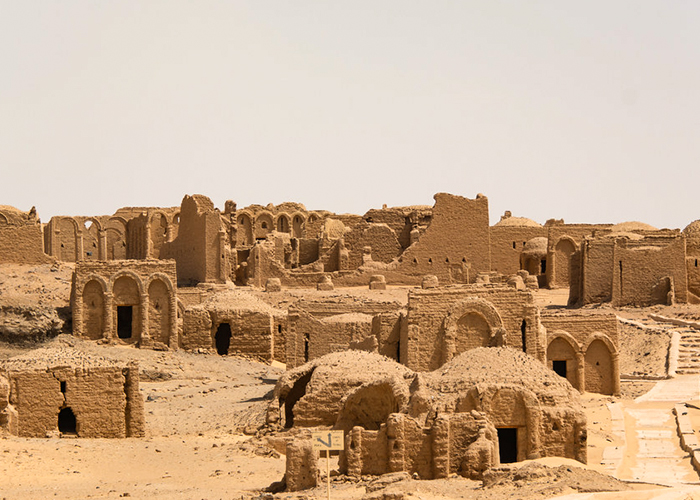The Kharga Oasis tours in Egypt is a well-known location for vacationers.
The largest of the Oases and the administrative headquarters of the New Valley Governorate, Kharga is also the name of the city. In terms of the number of people living there, it also has the biggest population of all the Oases.
It takes just two hours to go there from Luxor, making it the most convenient option because of its proximity to the Nile Valley. There are a large number of people and several contemporary buildings concentrated in the downtown area (about 70,000 people).

Upon arrival, the pungent aroma of dates assaults your sense of smell, and you are met by the sight of row upon row of palm trees that really date palms.
Although portions of Kharga are busy and modern cities, the city nonetheless manages to maintain the allure of the desert in other parts of the city.
One of the arts and crafts that are valued in Kharga is pottery, which is one of the town’s most famous exports.
In the primary town of Qasr, in addition to the many shops selling ceramic goods, there is also a pottery factory that visitors may go to and see the many stages of the pottery-making process.
In addition, Kharga’s lively bazaar or souk, which can be found in the prosperous Midan Show in the southern part of Qasr town, is an excellent location to go to in order to take advantage of some attractive price reductions.
During the time of the Romans, Kharga was an important hub for a variety of activities.
There are some relics that date back to more recent times in addition to those that date back to older ages. Kharga has been the last halt on the Forty Days Road from Sudan ever since the introduction of the camel, which occurred about 500 BC. This meant that all of the trade that took place in East Africa was required to go through this city.
Even in modern times, enormous caravans of camels make their way along this route, the majority of which are destined to be slaughtered once they reach Cairo.
Bhagwat’s Chapel’s Revealing Sacred Ceilings
This picture shows the vaulted ceilings of one of the Christian cemeteries that are considered to be among the finest maintained anywhere in the world. The grounds have a total of 263 elaborate graves in addition to a great number of churches.
The artworks that are located on the roof have a special attraction for me.
Inquire about the picture that has pictures of Mary and Jesus superimposed on top of constellations from the zodiac, and request to see it.
This same similar design may be found in pre-Christian Ptolemaic Egyptian art at the Temple of Dendera, but unfortunately, the original was transferred to the Louver in 1820, and it is no longer on show there. The Temple of Dendera is no longer a museum.

However, it is feasible to trace the line that binds together these two religions that couldn’t be more different.
Ain Um Dabadib is the name of a made-up figure that Ain Um Dabadib conceived.
An amazing castle known as Ain Um Dabadib can be found around 40 kilometers to the north of the large town of Qasr Kharga. This imposing structure has been in operational use unbroken ever since the period of the Romans.
There are breathtaking vistas to be had from this amazing position, which is situated at the base of an escarpment yet is still 220 meters above the level of the desert.
There are pots scattered all over the region, many of them broken and dispersed; some of them date back to the Islamic ages, while others date back to Christian times, Roman times, or even earlier.
Egypt and Paris are both home to some of the world’s most breathtaking architecture and landscapes.
It is a common misconception that the city of Baris, which is located in Kharga, was named after the capital city of France, Paris.
It is possible that this is an example of the amazing sense of humor that is prevalent in Egyptian culture.
New Baris is the name given to the environmentally friendly community that the renowned architect Hassan Fathi planned to take the place of old Baris.
Sadly, the residents did not adjust well to being relocated, and New Baris is now empty; it is an unusual example of a magnificent design that nonetheless fails to meet its intended purpose.


0 Comment